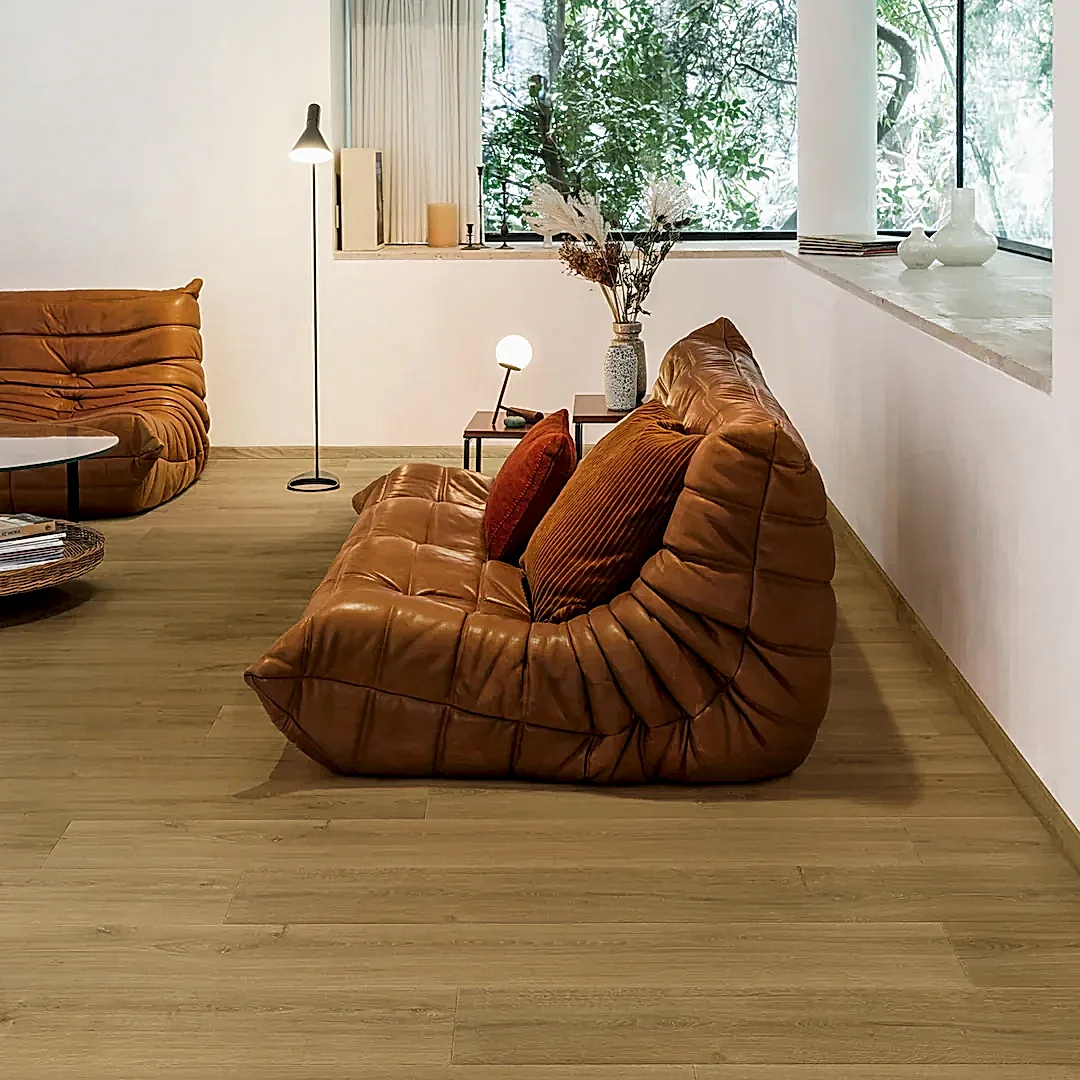
Author, Written by: P. Hirani (Wood flooring Expert)
When it comes to modern interior design, few trends are as exciting and versatile as multi-tonal flooring. Instead of sticking to a single hue or uniform shade, homeowners and designers are embracing the beauty of variation. Multi tonal floors—whether in wood, vinyl, or laminate bring depth, personality, and texture to a space, making it feel both natural and curated at the same time.
What Is Multi Tonal Flooring?
Multi tonal flooring features planks with varying shades, grains, or finishes within the same collection. This variation can be subtle, such as gentle shifts in tone among oak planks, or more pronounced, with contrasting light and dark boards. It is a design approach that reflects how real timber looks in nature, where no two pieces are ever identical. The result is a floor that feels organic, layered, and full of character.
Why Multi Tonal Floors Are Trending
The appeal of multi-tonal flooring lies in its ability to balance modern sophistication with natural charm. Here are some reasons it’s becoming a favourite in UK homes:
1. Adds Depth and Visual Interest
Uniform floors can sometimes appear flat, especially in larger or minimalist spaces. Multi tonal options add depth and movement, creating a dynamic look that changes with the lighting and furniture placement.
2. Enhances Natural Aesthetic
Designers are moving toward natural textures and authentic finishes. Multi tonal floors mimic the appearance of hand finished or reclaimed wood, which fits perfectly into the growing trend of biophilic design bringing nature inspired elements indoors.
3. Conceals Everyday Wear
For busy households, especially those with children or pets, this flooring style offers a practical advantage. The colour variation naturally hides scratches, scuffs, and dirt, making maintenance much easier compared to a single tone surface.
4. Versatile Styling Options
Multi tonal floors complement both contemporary and traditional interiors. In a modern space, they add warmth and personality. In classic or rustic homes, they enhance the lived in charm while remaining elegant.
Popular Materials and Finishes
Multi tonal effects can be found across several flooring materials:
Engineered Wood: Offers authentic grain patterns and can be stained in varying tones for a rich, layered look.
Luxury Vinyl Tiles (LVT): Provides the same visual texture as wood but with water resistance and easier installation.
Laminate Flooring: Budget friendly with advanced printing technology that recreates realistic tonal variation.
Some collections even blend different finishes such as matt, brushed, and gloss within a single range, creating an artisanal feel underfoot.
Design Tips for Using Multi Tonal Floors
Pair with Neutral Walls: Let the flooring be the focal point by keeping walls in soft neutrals or muted tones.
Coordinate Furniture Carefully: Choose furniture with wood tones that either contrast gently or harmonize with the flooring shades.
Use Area Rugs Thoughtfully: Rugs can help define zones in open plan spaces without hiding the floor’s beauty.
Consider Room Size and Lighting: Lighter multi-tonal floors can open up small rooms, while darker shades add coziness to larger areas.
Closing Perspective
Multi tonal flooring represents a shift toward individuality and natural design. It celebrates imperfection and variety, giving every home a sense of warmth and authenticity. For homeowners looking to blend durability with visual intrigue, this trend is more than just a passing style; it is a timeless expression of texture and tone.
About Author:
Peter H. is a flooring product expert who knows all about different types of flooring materials. He shares his knowledge in blogs to help readers make the best choices for their spaces.
